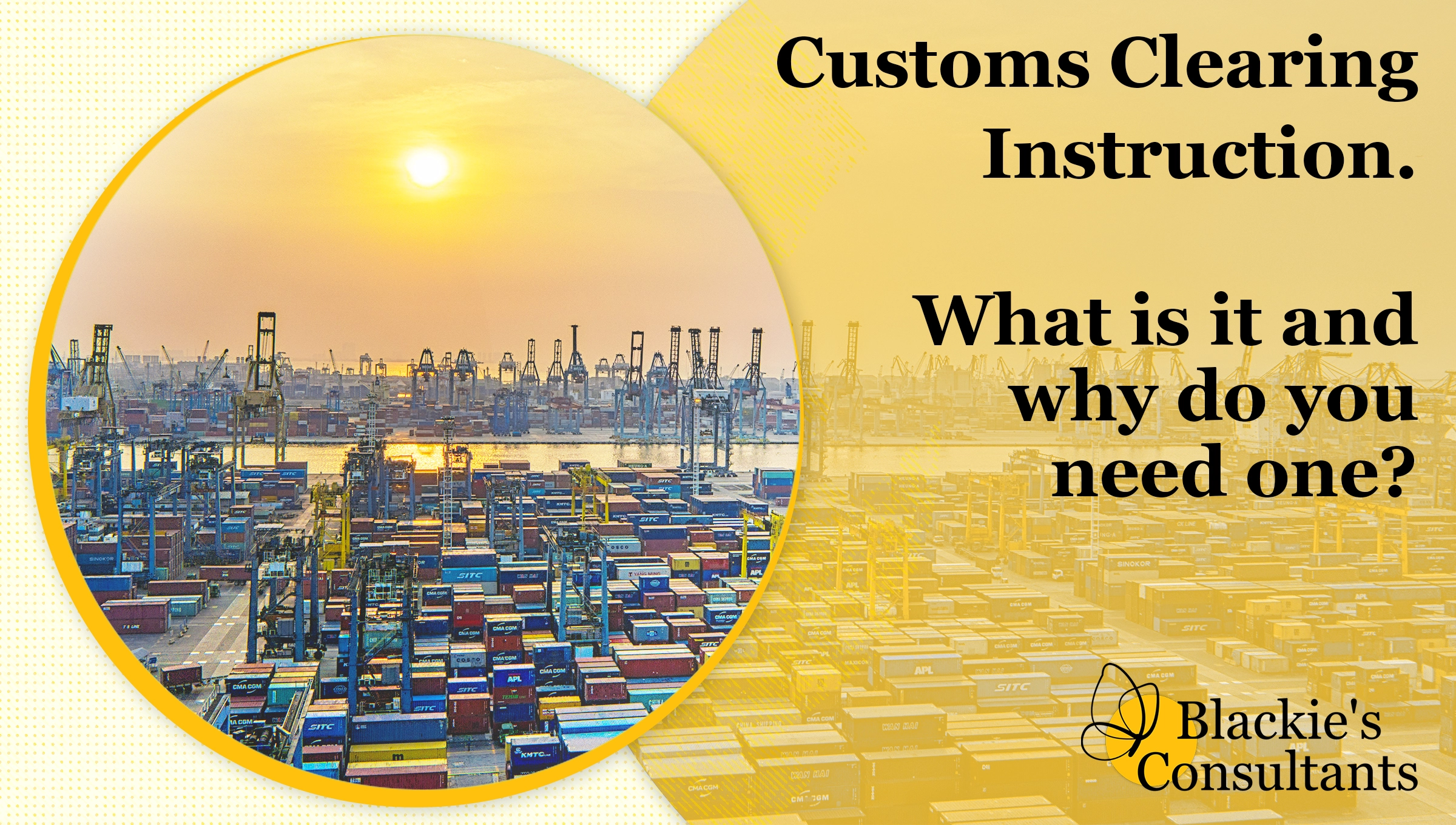Are you a company that operates cross-border supply chains between South Africa, Namibia, Lesotho, Eswatini, and Botswana? If so, you’ve probably heard of a Customs Clearing Instruction, but what exactly is it, and why do you need one?
We ask Blackie’s expert Ernest van Vuuren for the answers.
What Is A Customs Clearing Instruction?
The customs clearing instruction, as per the Customs Act South Africa, and mainly, Customs Act,39 (c), is essentially the legal documentation completed by you as the exporter or importer granting your freight or clearing agent permission to represent you at a border post where goods must be cleared.
This compulsory document includes all the activities and instructions to move the goods from the seller to the buyer at the handover points and the respective Incoterms.
Incoterms(international commercial terms) are a set of internationally recognised rules defining the responsibilities of sellers and buyers. This would include terms about who is responsible for paying for and managing the shipment, insurance, documentation, customs clearance, and other logistical activities.
Who Completes The Customs Clearing Instruction?
Our client or any other nominated member of our client’s company may complete the clearing instruction. At no point is a member of Blackie’s Consultants allowed to complete this form on the client’s behalf. We can only continue with client’s paperwork once we have received a complete clearing instruction.
What Is The Difference Between A Direct And Indirect Export, And Why Is It Important To Know The Difference?
This is an essential part of completing the customs clearing instruction because it affects both the procedures and has different VAT implications depending on the export type and country involved.
Direct Export – when a Lesotho client buys goods from a South African supplier and the South African supplier transports the goods, either with his transport or using a transporter, deliversdeliver the Lesotho client’s goods in Lesotho.
Indirect Export – when a Lesotho client buys goods from a South African supplier and the Lesotho client comes to South Africa, picks up their goods themselves or utilising arranged transport, and takes it to their place of business in Lesotho.
How Do We Interpret The Customs Clearing Instruction, And Why Is It Essential That It’s Executed Accurately?
- Firstly, having a valid Importers/Exporters code is important. If not, we will instruct our client to apply for one. Failure to comply will result in no future assistance. For SARS auditing purposes, each company must have its own valid code.
TIP: Learn more here about how to get your importer code from SARS and save on tech.
- The customs clearing instruction must have been completed by a representative of our client’s company. It will be sent back to the client with a query if we deem it incomplete.
- We will then check if the invoices attached to the clearing instruction are in good clear, readable print and relevant to the instruction. This is time-consuming as they need to check that all invoice numbers, descriptions, and values, as recorded on the clearing instruction, correspond. If not, they cannot continue, as the direct instruction differs from the actual invoices presented.
The negative effects of not having the correct information far outweighs the risk of not adding the correct information. The clearing process comes to a halt resulting in unnecessary costs and fines.
If a client wishes to make any changes, the client must supply us with a new customs clearing instruction.
TIP: Never give another company your Importers/Exporters code to clear goods. The company that the code is registered for will have to take full responsibility for any penalties and audits that might occur.
What Happens When Two Or More Consignees Are On The Same Load?
It is required by law that each consignee has its own clearing instruction even though it is physically on the same truck unless it is for the same company yet a different address. However, if all the goods go to the same consignee, only one clearing instruction is needed. See an illustration here.
TIP: Learn more about Customs Procedure Codes for BLNS countries here.
Why Is It Important To Declare The Weight And Quantities Accurately?
If wrongfully declared, guessed, or just not recorded by the client, it will result in time-consuming delays. Revenue authorities will question information that seems inaccurate, demand a Voucher of Correction (VOC), and/or issue a penalty to the relevant party for being negligent. In addition, this will raise concern for what may seem like smuggling and under-declaring of goods and/or values.
As this is a severe error, VOCs become increasingly difficult to explain to SARS/LRA, increasing the cost. What happens in case of a load inspection?
Should an invoice on the load be selected for inspection, the consignor’s responsibility is to complete an individual clearing instruction for the nominated invoice that is being inspected.
Want To Apply For Customs Clearing Services?
If you would like to apply for our customs clearing services, simply complete this form, and one of our consultants will get in touch. Should you have any questions, you can contact us for further advice.





